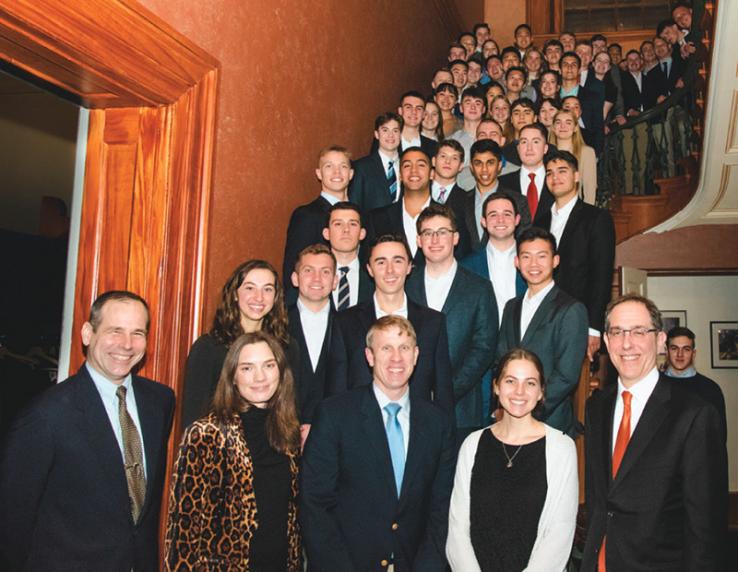
On April 12, I stood with other new members of the Education for Seapower Advisory Board (E4SAB) at the Navy Yard in Washington as Secretary of the Navy Carlos Del Toro administered the oath of office.
Secretary Del Toro’s strategic plan articulates a commitment to “Empowering [the Navy’s] People,” including by ensuring that Naval educational institutions “expand access for all personnel” and “provide world-class curricula, research opportunities, and partnerships.”1 E4SAB provides the Navy with independent advice relating to the Naval War College, Naval Postgraduate School, and U.S. Naval Community College.
I am honored to serve on E4SAB, and I hope that I can contribute productively to its mission. I also hope that, by learning more about the Navy’s educational program, I might identify new opportunities for constructive engagement between Princeton and the nation’s armed services.
I have made it a priority to grow those connections during my presidency. In 2014, during the first year of my presidency, I brought the Naval Reserve Officers Training Corps program back to the University after an absence of more than 40 years.
We have encouraged and supported Princeton’s Army, Air Force, and Navy ROTC programs throughout the past decade. The number of ROTC students on campus has grown from 28 in fall 2013 to 58 today.
This year, in response to a student request, I hosted a presidential dinner for Princeton’s ROTC students. The cadets and midshipmen packed the main dining room at Prospect House. It was an inspirational evening: I enjoyed hearing directly from our students about their experiences, achievements, and aspirations.
In 2018, we relaunched Princeton’s transfer program so that we could attract outstanding community college students and military veterans—most of whom earned some college credits while serving their country—to Princeton’s student body. This fall, we began to double the size of the program. Military veterans have added tremendously to our community. Their experience, talent, and commitment to service enhance both the excellence and the diversity of our campus.
A growing number of Princeton faculty are engaged with our ROTC and veterans’ programs. This year, the Department of History and Tiger Battalion—Princeton’s Army ROTC unit—resumed their collaborative trip to Normandy, France. Professor David Bell, Professor Phil Nord, and graduate student Joanna Hope Toohey co-led the trip, providing insights about World War II and French history, along with Lieutenant Colonel David Gunther of the Tiger Battalion.
The Normandy trip, made possible by the generosity of John Hurley ’86 and his late wife Kamilla Hurley, had occurred regularly until the pandemic; this year marked its post-COVID return.
These multiple connections between our university and the American military are important to me for many reasons, including the talent they attract to our campus and the many ways that they enhance and exemplify Princeton’s commitment to service. But there is also a deeper, constitutional reason to value them.
When I speak to our new graduates at the University’s annual ROTC commissioning ceremonies, I often comment on the extraordinary oath that they are about to take— the same oath, in fact, that Secretary Del Toro administered to me.
Members of the American armed forces take an oath to defend the Constitution of the United States—not the president, nor the flag, nor the country, nor even the people, but the Constitution. That idea—that our military should bear “true faith and allegiance” to a collection of democratic ideals and institutions, rather than to any person or power— was a radical innovation of the American founding.
It remains a rare and powerful idea in the world today. To sustain it, we must have civilian leaders who respect military service, and we must have military officers who subscribe to the principles of republican government and share in the benefits of liberal learning.
There will always, of course, be some tensions and differences between civilian colleges and universities and the armed services. Those differences, however, need not stand in the way of—indeed, they may help to animate—constructive engagement between our institutions.
I hope that my service on the E4SAB will make at least a modest contribution to that cause, and that Princeton will continue to find new and productive ways to partner with the armed services on shared projects and ideals.
1 “Our Navy-Marine Corps Team: Strategic Guidance from the Secretary of the Navy.”
